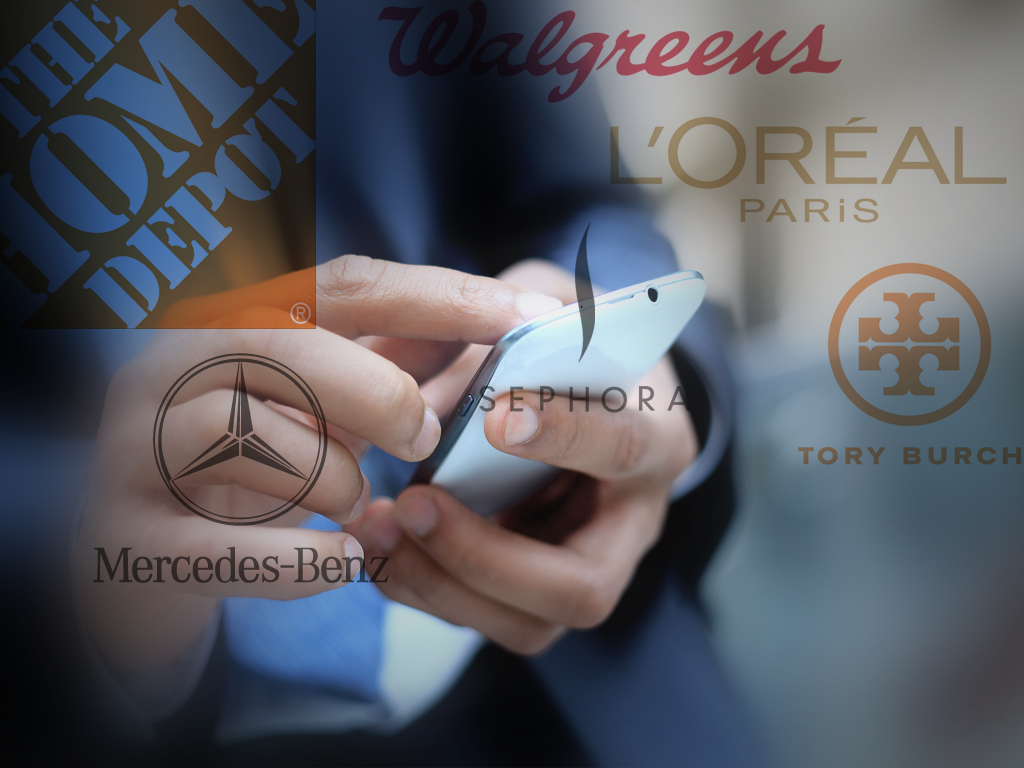Smart brands recognize the importance of being mobile-friendly. They know consumers are increasingly using mobile throughout the purchase journey and will abandon bad mobile sites. Google also recognizes the importance of mobile, recently adding a “Mobile-friendly” label to its search results, with a significant mobile search ranking update on the horizon tomorrow (April 21), which will pass or fail pages on a page-by-page basis. Which got us to thinking – just how mobile-friendly are the biggest global brands?
We looked at Google’s mobile search results for the top 100 global brands, as ranked by Interbrand, to see which sites’ home pages have received a “Mobile-friendly” label from Google. 
Eighty-five percent of brands passed the test. This includes names you’d expect to be mobile-friendly – including Apple, Coca-Cola, Microsoft, Facebook, and Google itself.
But for the 15 brands that didn’t earn a “Mobile-friendly” label, we used Google’s Mobile-Friendly Test tool to see why Google failed to give them the designation.
What’s interesting is that a few of the brands that failed to earn the “Mobile-friendly” label actually were mobile-friendly, according to Google’s own tool! So what gives? Let’s look at all the results.
Mobile-Friendly Sites That Didn’t Earn Google’s ‘Mobile-Friendly’ Label
When it comes to rewarding mobile-friendly sites, we found Google isn’t entirely accurate.
Four mobile-friendly sites failed to earn Google’s “Mobile-friendly” designation. Yet, after testing the home pages of Kellogg’s, Panasonic, Johnnie Walker, and Pizza Hut with Google’s Mobile Friendly Test tool, Google reported those sites actually were mobile-friendly.
What’s the deal? Why haven’t these brands that obviously have invested in mobile received the mobile-friendly label?
Turns out, there are a couple of reasons why Google says it doesn’t give pages the “mobile-friendly” designation:
- Google’s crawlers haven’t yet reindexed the mobile-friendly version of the page. Google’s testing tool checks pages in real-time, so it might be the case that the tool is ahead of Google’s crawlers.
- The website is blocking resources Google needs to render the page.
If you have recently converted a page to be more friendly, yet Google isn’t recognizing it, what can you do?
According to Jennifer Slegg, writing at The SEMPost, you can do the following:
- Use the fetch and submit function in Google Webmaster Tools.
- If you have a category page that leads to all of the lower-level pages in that section, then “you can submit that page and say this page and all the linked pages should be recrawled as soon as possible.”
- Lastly, you can also set up a sitemap file and submit it to Google with all the changes made recently, essentially telling Google “I updated my whole website, it has a new change date on it and Google will try to use that as well to speed up crawling of those pages.
Disallowed by Robots.txt
Two brands, IBM and Gap, failed to earn the “Mobile-friendly” label on their home pages because their URLs redirect to mobile sites (http://m.ibm.com/us/ and http://m.gap.com/browse/home.do, respectively) that were disallowed by their robots.txt files, according to Google’s tool.
Because these brands used their robots.txt file to restricted Google’s ability to access their sites, anyone who searches for either brand will see this message in the search results: “A description for this result is not available because of this site’s robots.txt.”
To find out if your site is having this same issue, do a mobile search for your brand on Google. If you see this message, the fix is simple: update your robots.txt file.
Not Mobile-Friendly
Nine of the 100 homepages of brands we looked at failed the mobile-friendly test. The reasons for that failure differed slightly from brand to brand – some mobile sites failed due to poor usability, while others failed due to blocking resources Google needs to render the page accurately. And shockingly, some of these giant brands have no mobile website at all!
So which brands are mobile-failures?
Nike

Why it failed:
- Text too small to read.
- Links too close together.
- Mobile viewport not set.
Sports brand Nike has a separate mobile site (m.nike.com), but simply having a mobile site isn’t enough to be “mobile-friendly” by Google’s definition. “Just do it” … wrong.
Canon

Why it failed:
- Text too small to read.
- Links too close together.
- Mobile viewport not set.
Canon, a manufacturer of cameras and accessories, has opted with going “unresponsive”, forcing a website designed for desktops on mobile consumers. “Delighting you always” … as long as you aren’t a mobile user.
Nescafe

Why it failed:
- Text too small to read.
- Links too close together.
- Mobile viewport not set.
- Uses incompatible plugins.
Like Canon, Nescafe is serving its mobile-unfriendly desktop home page. That plugin issue? Flash. Welcome to the non-mobile world of Nescafe.
Siemens

Why it failed:
- Content wider than screen.
- Links too close together.
This is a bit of an odd one. Siemens has a separate mobile site (m.siemens.com/) that doesn’t get a “Mobile-friendly” label when doing a Google search on Android, but the same home page gets a “Mobile-friendly” label when searching on an iPhone.
Despite passing or failing in the search results depending on the device, it still fails Google’s test for the above two reasons. I’m not seeing the “content wider than screen” issue on either of the smartphones used for this testing. Good luck, Siemens!
AXA

Why it failed:
- Text too small to read.
- Links too close together.
- Mobile viewport not set.
- Content wider than screen.
Although financial brand AXA has opted for responsive design, Google is accurate in its assessment. This site needs some good advice about its design.
Nestle

Why it failed:
- Text too small to read.
- Mobile viewport not set.
- Links too close together.
- Content wider than screen.
Food and beverage brand Nestle fails here. But it looks like what Google’s tool is seeing is different from what I’m seeing. Blame Nestle for some bad mobile SEO.
The culprit seems to be 17 resources that couldn’t be loaded. The fact that Google can’t access the resources it needs to render the page means Nestle gets a failing grade. Nestle should easily receive a “Mobile-friendly” label once the brand allows Google access to those resources.
DHL

Why it failed:
- Text too small to read.
- Links too close together.
- Mobile viewport not set.
- Content wider than screen.
Global logistics brand DHL simply fails to deliver an excellent mobile experience, instead giving mobile users a website designed for the desktop.
MasterCard

Why it failed:
- Links too close together.
- Text too small to read.
- Mobile viewport not set.
- Content wider than screen.
There are some things money can’t buy – and one of them is apparently a mobile website for credit card giant MasterCard. Here is yet another brand giving a website designed for desktops to mobile users.
Kleenex

Why it failed:
- Text too small to read.
- Links too close together.
- Mobile viewport not set.
The lack of a mobile site by Kleenex figuratively makes me want to cry.
Conclusion
Users want mobile-friendly sites. So do the search engines.
Whether you go with responsive design, dynamic-serving, or a dedicated mobile site (m.dot), the key is to ensure whatever configuration you choose, do it right. Otherwise, searchers may just start passing your site up in favor of a “mobile-friendly” competitor.
Download our Mobile SEO Now ebook to learn everything you need to know about consumer smartphone usage, why it’s critical to be mobile-friendly, and what you need to do to successfully optimize your web presence for mobile consumers.
Does your brand or business have a “Mobile-friendly” label?


